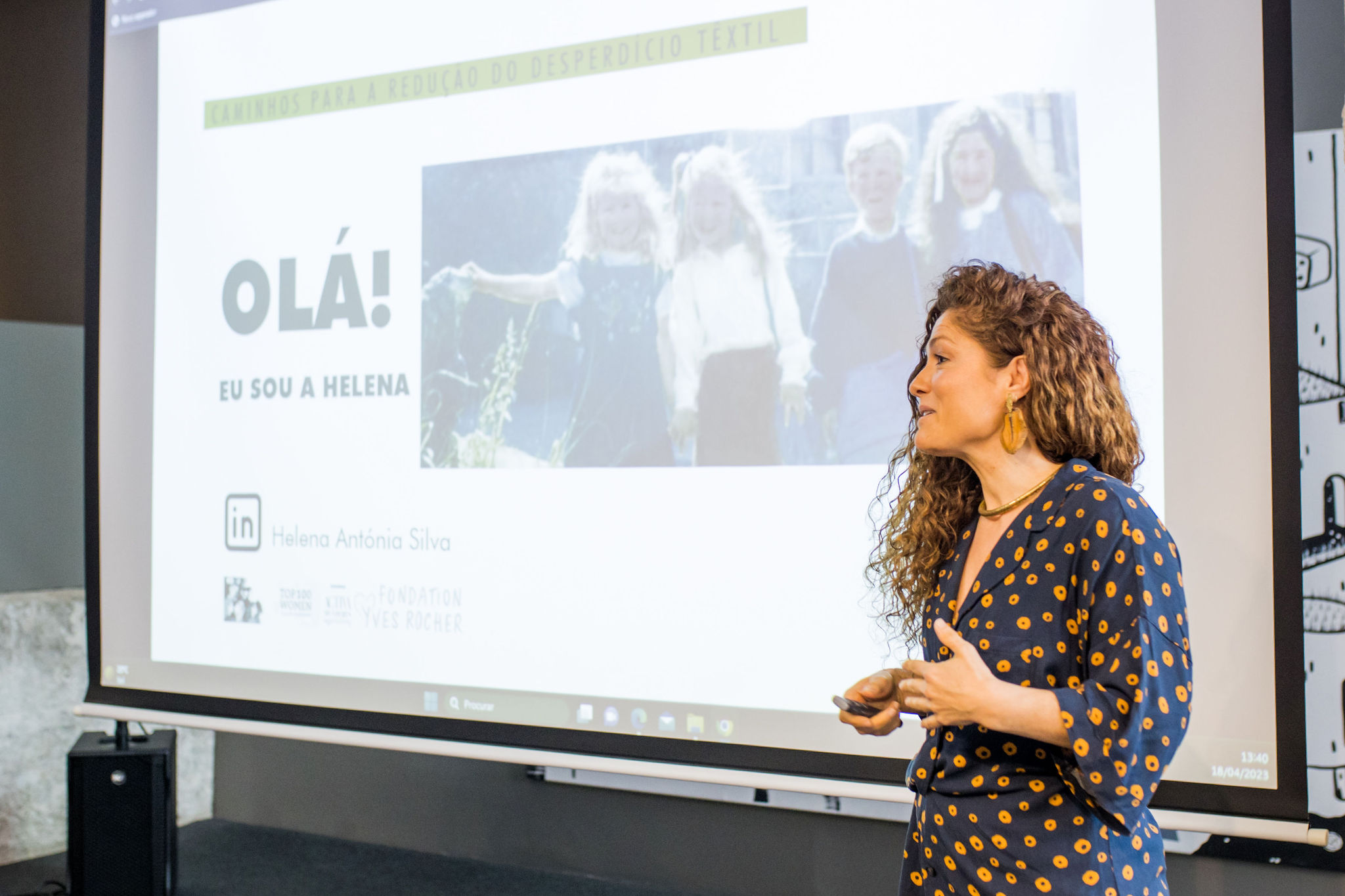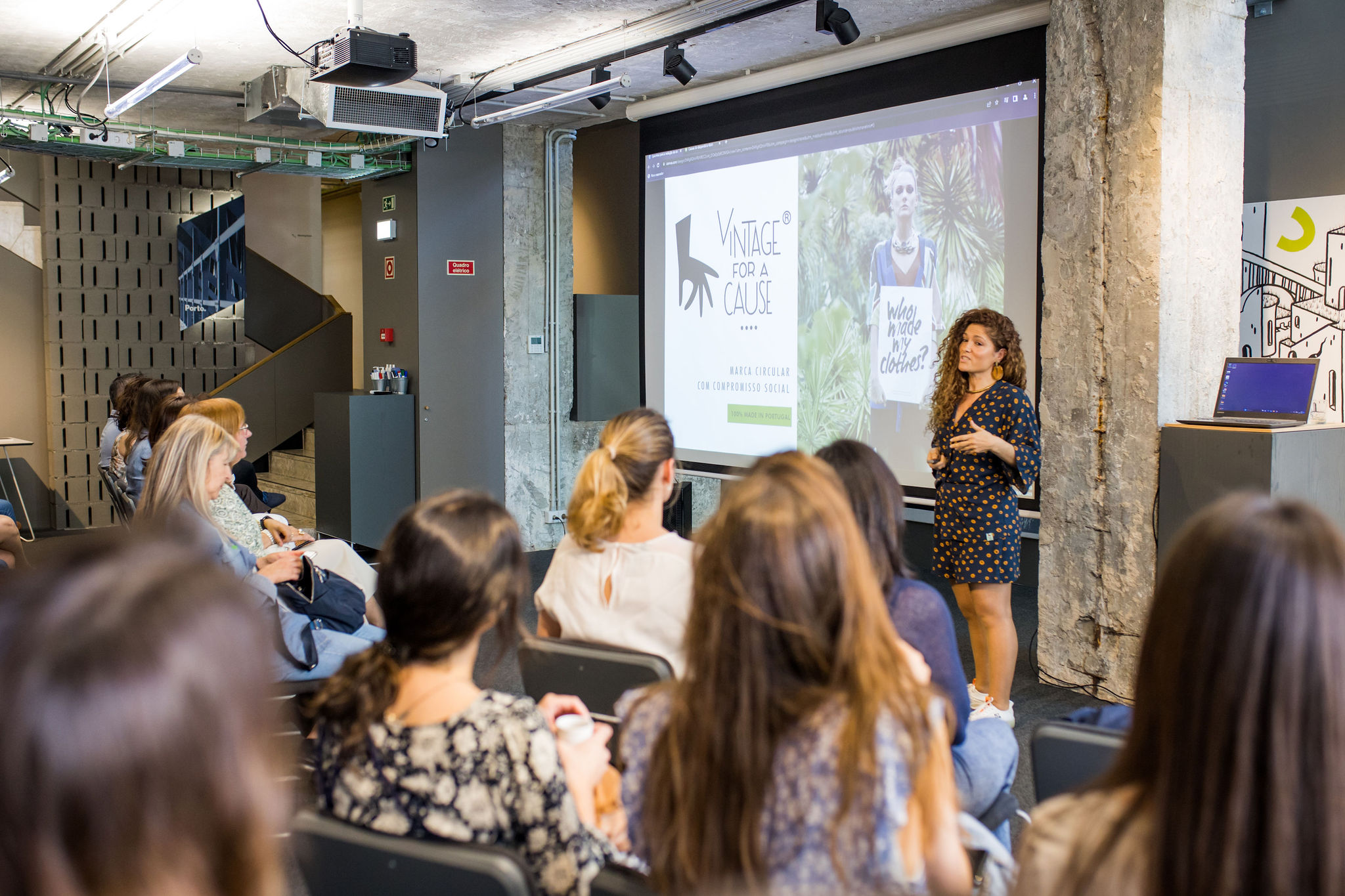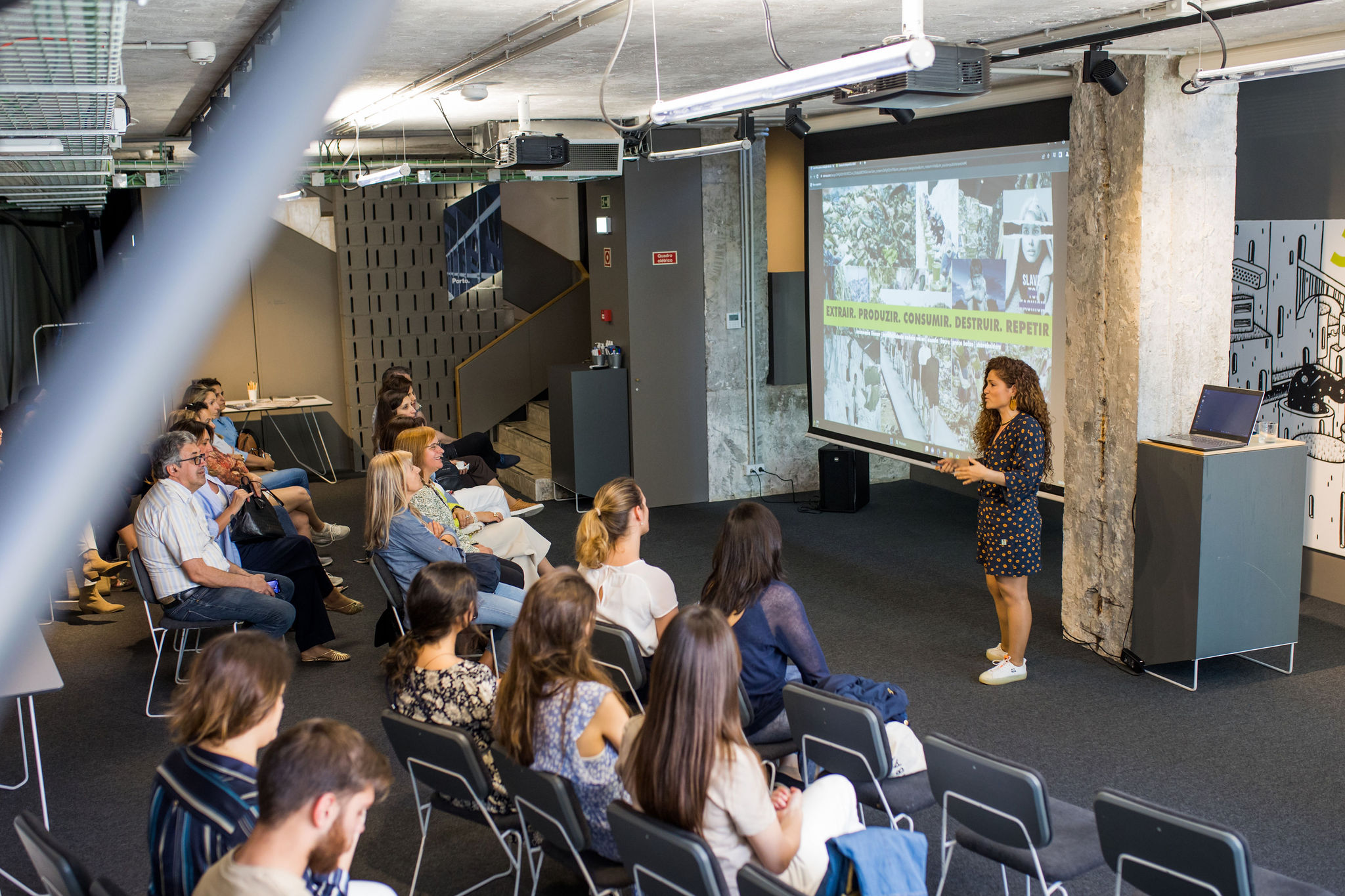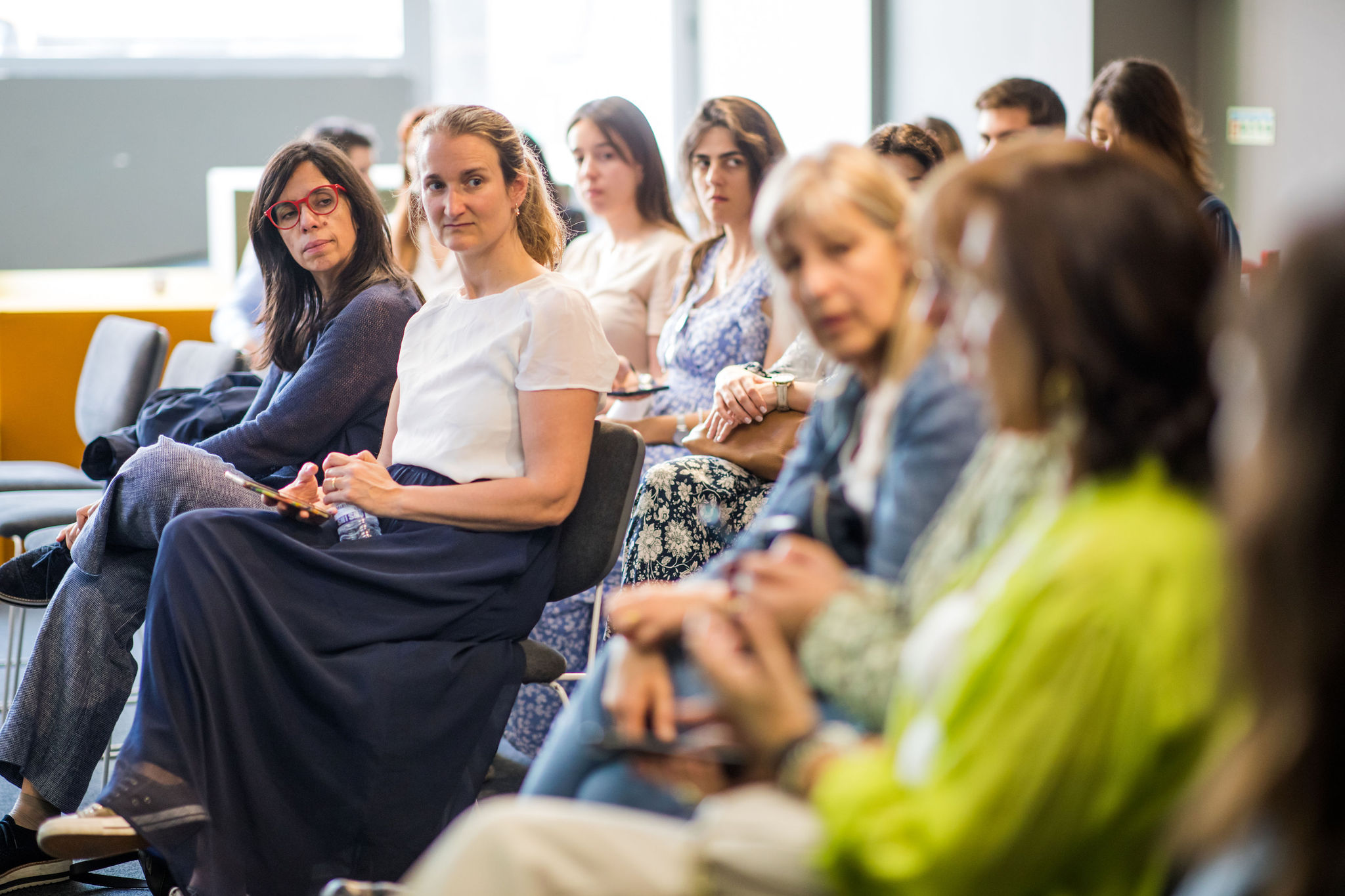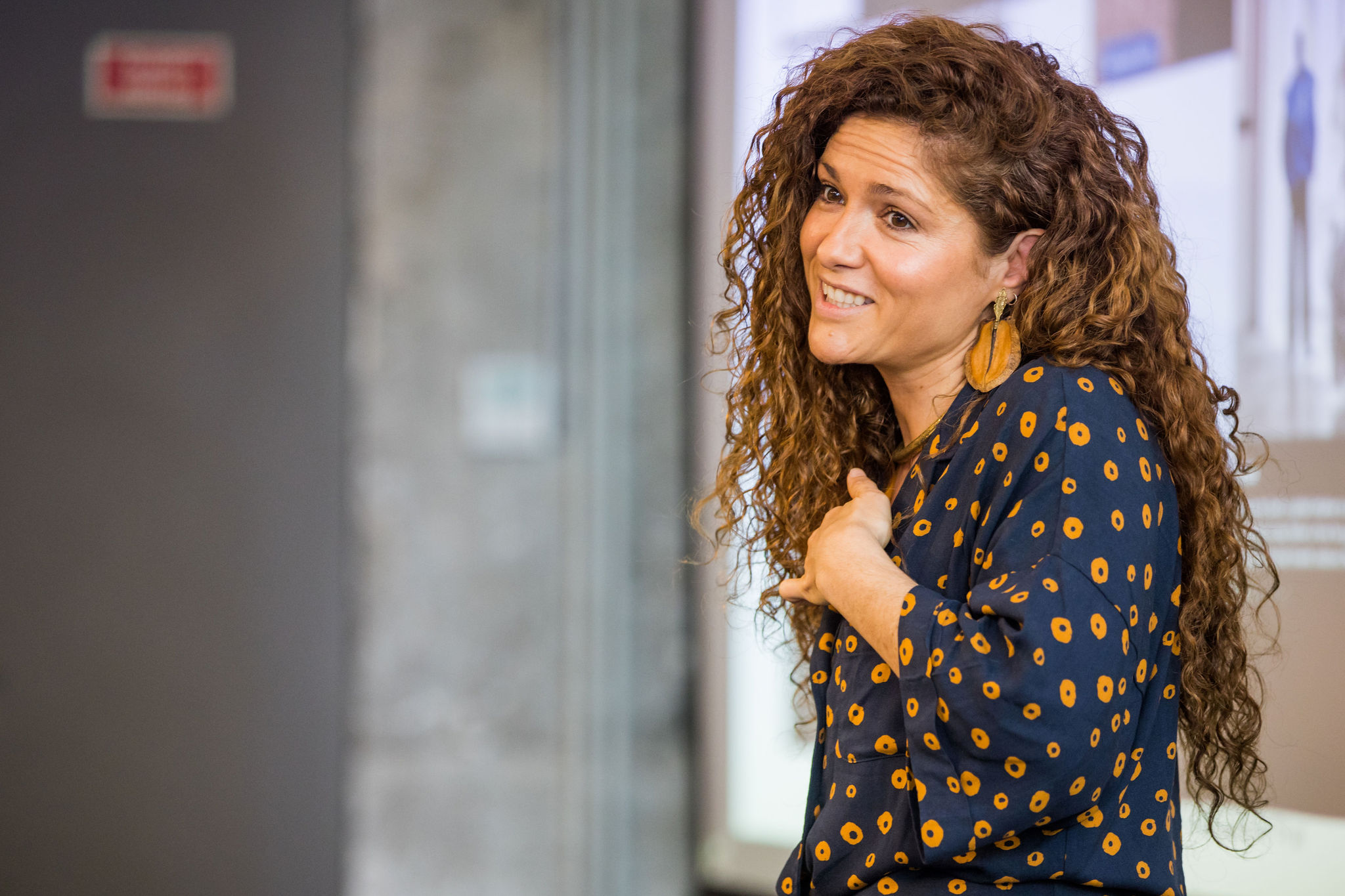Turning the tide: Helena Antónia Silva’s efforts to reduce textile waste
In a world dominated by fast fashion, where clothes are treated as disposable and textile waste is becoming an environmental catastrophe, Helena Antónia Silva’s story brings hope and inspiration for the changes that are within our reach. We recently had the privilege of attending a session in which Helena shared her journey and mission to combat textile waste through her own initiative “Vintage for a Cause”.
Helena’s story is deeply rooted in the industry of northern Portugal. Her mother was a seamstress and her father worked in a furniture factory. Growing up, she was surrounded by clothes made by her mother’s skillful hands. She later graduated in law and worked for 15 years in an insurance company. At a certain point, she received a newsletter from the Center for Social Innovation and found a new interest in the subject.
Tired of the routine and centred nature of the insurance business, Helena embarked on a journey of self-discovery through a postgraduate course in Social Innovation. At the time, she couldn’t have guessed that her personal project would be born.
“Vintage for a Cause” is Helena’s idea, a project that addresses a pressing issue in Portugal – the retraining of women over 50 from the textile sector, at a time when this once successful national industry was in decline. The project’s main objective is to break the cycle of extraction-production-consumption-destruction-repetition that defines the fast fashion industry. Helena believes that it is essential not to accept this way of life and consumption without questioning its consequences.
During the session, the guest addressed several critical aspects of reducing textile waste and promoting sustainability:
– Rethinking consumer choices: Helena Antónia Silva emphasised the importance of seeing purchasing decisions as “votes” for the kind of world we want to live in. By choosing sustainable and conscious brands over fast fashion, consumers can play a crucial role in shaping the future of the fashion industry.
– Silver Economy: a concept that emphasises inclusion and a sense of belonging for older individuals. Vintage for a Cause not only reduces textile waste, but also offers meaningful employment opportunities to women over 50, fostering a sense of purpose and community.
– Responsibility and longevity: consumers should see themselves as responsible citizens who care about the longevity of products. This means valuing quality over quantity and considering the entire life cycle of a garment, from pre-consumption to repair and prevention.
– Selective collection of textiles: it is essential to selectively collect post-consumer textiles. This approach ensures that discarded textiles are properly managed and reused instead of ending up in landfills or incineration plants, rendering them unusable and contributing to more pollution.
– Collective action: achieving sustainable development requires collective action. Individuals, companies and decision-making bodies must work together to tackle the challenges posed by textile waste and other environmental issues.
One of the most striking moments of the session was when a member of a fire brigade shared his challenges in rehabilitating uniforms, fabrics, boots, etc. Helena Antónia Silva recognised that Portugal lacks adequate solutions for textile waste and that sending these items to landfills or incineration plants is far from ideal due to environmental concerns.
Although some companies donate textile waste to Vintage for a Cause, not all garments are suitable for their rehabilitation project and space restrictions can be a challenge. The speaker’s dedication to finding innovative solutions to these issues was evident during the discussion.
In conclusion, Helena Antónia Silva’s journey from a career in insurance to becoming an advocate for reducing textile waste is a testament to the power of personal passion and social innovation. Her initiative, “Vintage for a Cause”, not only tackles the urgent problem of textile waste, but also serves as a model for inclusive and sustainable economic development. As consumers and citizens, we can all learn from her example and make more conscious choices to combat textile waste and create a more sustainable future.
